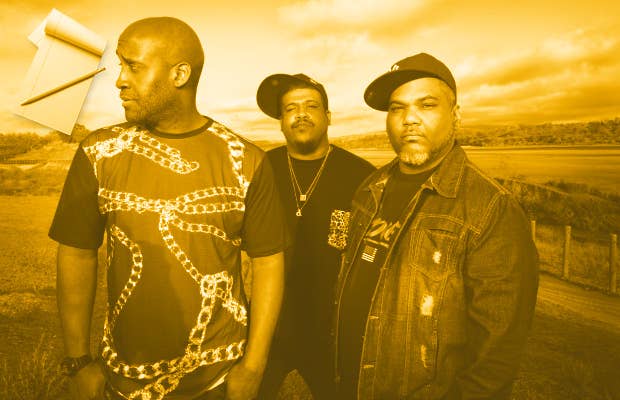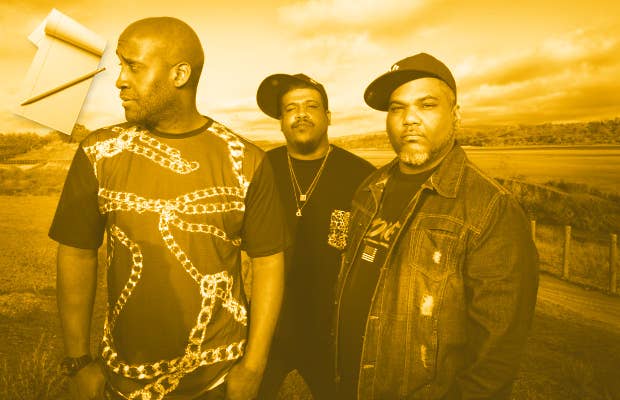
There is as much good music writing now as there has ever been. There are gross inequalities in the system still, in who gets heard and who is silent. But more than ever, people are able to let their experiences and expressions be heard.
Thinkpieces, essays, reviews and features: the internet has overwhelmed us with writing. There's so much of it out there, and it's all so easy to lose perspective. The more our Facebook feeds tell us what's worth reading, the less likely we are to stumble across something outside of our worldview.
In an attempt to get a handle on all of the music writing out there, we've decided to put everyone up on the music writing we've enjoyed reading during the course of the week. If you've read something that we've missed, feel free to put it in the comments.
Written by David Drake (@somanyshrimp), Brendan Frederick (@bfred), and Kyle Kramer (@KyleKramer).
- - - -
That Chop on the Upbeat by John Jeremiah Sullivan for Oxford American
Every internet-savvy music nerd has experienced it: a lost night spent wading through endless YouTube streams while researching some newly discovered corner of musical history. Seasoned magazine writer John Jeremiah Sullivan admits that a pretty intense YouTube binge fueled this 7,000 word article that strives to uncover the roots of popular Jamaican music. The first half digs into the origins of The Wailers—namely the group’s forgotten, pre-Bob Marley leader, Bratty—while the second half goes even further back and tries to pinpoint the origin of the accented offbeat that became the defining musical feature of ska and reggae music. He makes a pretty compelling argument that the sound can be traced back to the records of an obscure Memphis R&B singer named Roscoe Jenkins, exposing the fascinating influence of Southern American jump-blues on 1950s Jamaica. Like all investigations of musical evolution, Sullivan admits that this one has too many complicated layers to truly find that singular origin story. But it sure seems like he had fun trying. —Brendan Frederick

Word Is Bond: Black Hippy and the Power of Repetition by Jayson Greene (@Jayson_Greene) for Pitchfork
Jayson Greene discusses the way our brains are wired to recognize patterns in music, such as references to other lyrics, and he points to the way Black Hippy's rappers use this trick to develop a sense of unity throughout their songs. With the release of ScHoolboy Q's Oxymoron, it's a unique take on what makes the Cali crew a crew and a new way of thinking about what happens when you listen to music. —Kyle Kramer

It Might Blow Up, and It Will Go Pop by Sean Fennessy (@Sean_Fennessy) for Grantland
Sean Fennessy's widely-discussed piece for Grantland jumps off from the success of novelty rap song "Achy Breaky 2" by Buck 22 and Billy Ray Cyrus to make a wider point about the state of hip-hop and popular music more broadly. He argues that the sudden success of the song is "that moment when commercial instinct overpowers all good taste." He goes on to lay out a map covering the major constellations of hip-hop as it stands today. He makes twin points about how "Achy Breaky 2" is a canary in the coal mine: first, that new rap songs are being weighed down by the "detritus" of other styles; and second, that hip-hop is a genre without center, or as he put it, "a ghost ship, piloted by the swaying waters of What’s Hot. A genre can withstand only so many novelty songs before it becomes a novelty."
I would contest that final point on the facts; hip-hop has always been a genre packed with novelty songs, and the success of one is no more indicative of hip-hop's health than the success of Rednex meant the death of electronic dance music. There is definitely a sense among hip-hop fans that the genre is becoming whiter by the day, that the Mac Millers and Macklemores feel more comfortable—and more popular—than ever. (Former Music Editor Dave Bry wrote an article about this phenomenon last week.) But Fennessy has a good point about hip-hop's seeming directionless-ness, as the separation of artist, sound, hit, and style has left the genre feeling like a bunch of individual pieces detached from the wider whole.
I would argue that the problem is being looked at backwards; it isn't that hip-hop doesn't have a huge audience still generating creative, forward-thinking music. But perhaps the investment has all but dried up with the industry's fall. At the same time, measuring what is popular with the genre's core audience has becoming increasingly complex and disjointed. Until DatPiff and WorldStar streams are incorporated into chart mechanisms and "what's hot" to the media isn't primarily filtered through an inefficient blog A&R system, until hip-hop can return to the Rhythmic radio format, rap music will remain the primarily underground phenomenon that it has become today. —David Drake

Free Samples by Geeta Dayal (@geetadayal) for Slate
On Valentine's Day, De La Soul released their albums for free online. As it turned out, many of the MP3s they had uploaded had originated with a Russian music pirating site. Perhaps this was a sly commentary on the confusing status of De La Soul's current masters—which remain unavailable on streaming services and digital download sites like iTunes. Geeta Dayal took a closer look, interviewing a number of sources to get to the bottom of why a platinum-selling act like De La Soul has a catalog that remains under glass, and looks at the ramifications for history. One of her sources suggests that "De La Soul’s contemporaries—groups like A Tribe Called Quest—vastly exceed De La Soul in their currency with a younger crowd, in part because their music is much more readily available." —David Drake
RELATED: The Week In Music Writing[Last Week]
